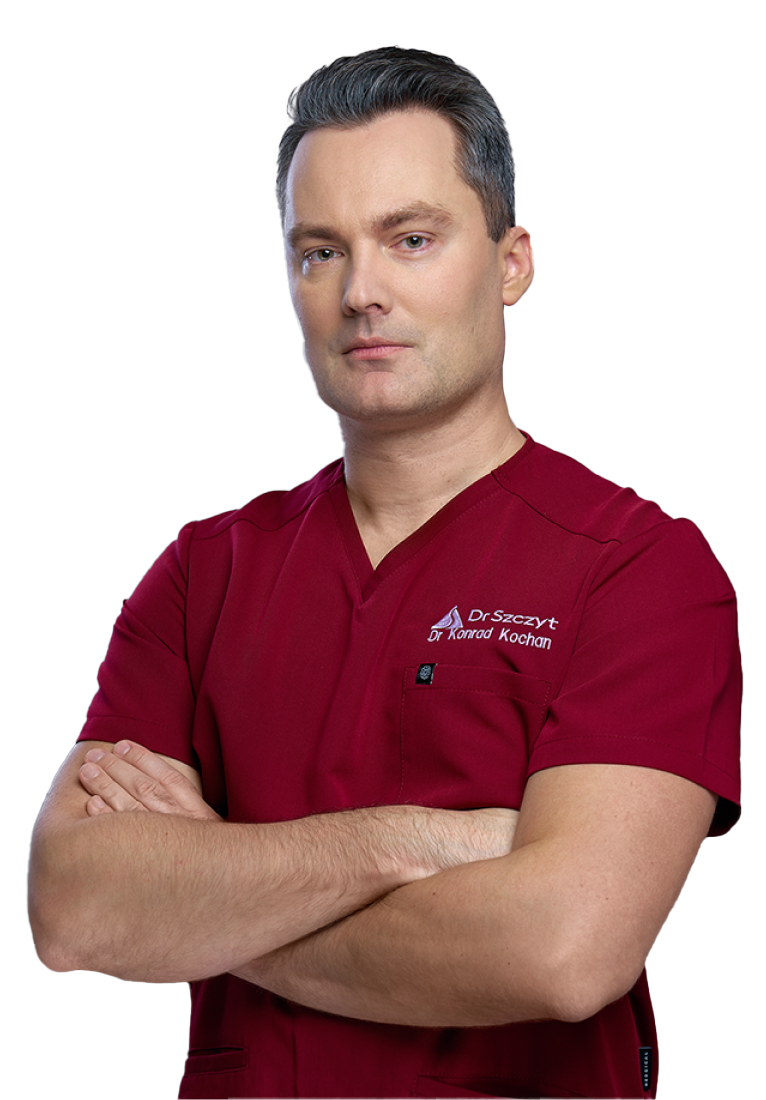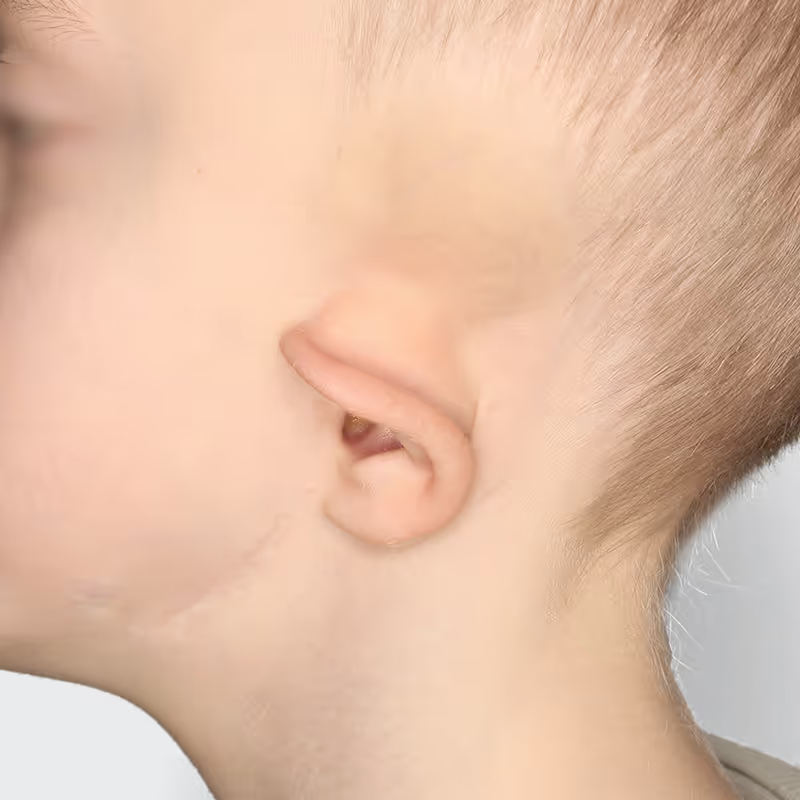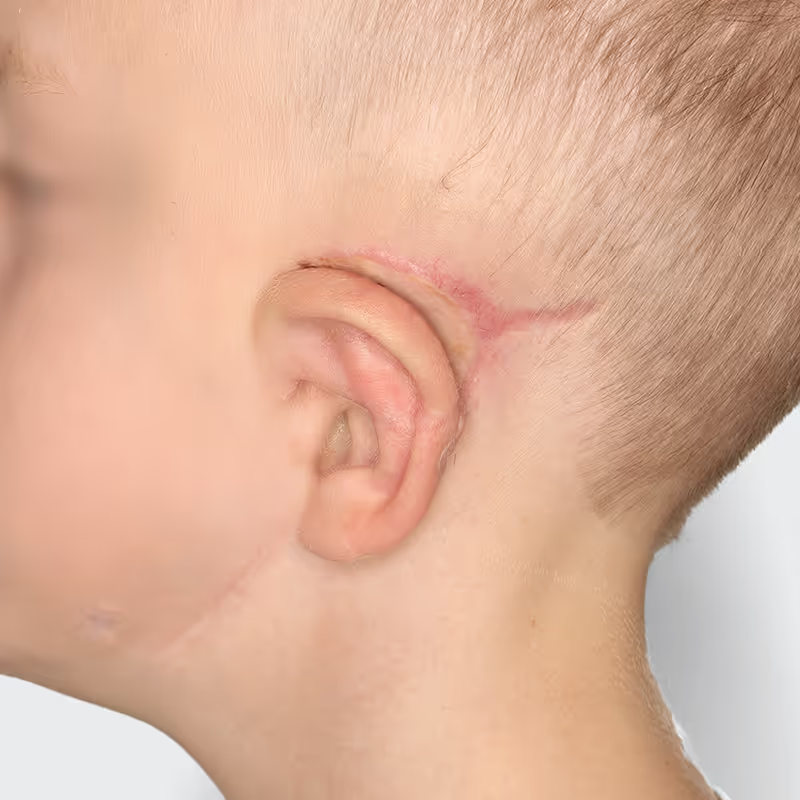
What is ear surgery and what does the procedure look like?
Surgical ear correction, professionally known as otoplasty, is a way to correct specific defects directly related to the hearing organ. Ear surgery can be performed on both adults and children (no earlier than 7 years of age). Depending on the problem and needs, one or both ears may be operated on. The procedure is performed under local or general anesthesia and lasts about 1-2 hours.
Ear plastic surgery can be divided into several categories, depending on the type of problem and the purpose of the procedure.
Correction of protruding ears
This is the most common type of ear plastic surgery. The procedure involves cutting the skin behind the ear and exposing the cartilage, then shaping the cartilage using special surgical techniques. Fixing the cartilage with sutures is aimed at achieving a natural adhesion of the ear to the head.
The effect of the procedure is to reduce ear protrusion and improve facial aesthetics. In addition, in some cases, the surgery can also reduce the visibility of such anomalies as Darwin's nodule (a thickening at the top of the auricle's clavicle).
Ear reconstruction (microtia)
Ear reconstruction is performed in cases of congenital defects, such as microtia – underdevelopment or absence of part of the auricle. The procedure involves recreating the shape of the ear from the patient's rib cartilage. The aim of the operation is to achieve the most natural appearance of the ear possible.
The procedure is performed on children over 12 years of age, when the development of bone and cartilage structures is at the appropriate stage.
Plastic surgery for rolled ears
This surgery applies to cases in which the auricle is malformed and curls inward or outward. Sometimes the entire auricle can be almost completely curled up.
The procedure involves restoring the correct shape of the auricle by properly shaping the cartilage and skin. The goal is to improve the aesthetics and symmetry of the ears.
Surgery to separate the auricle from the skull
In some cases, the defect involves a partial fusion of the auricle with the skull, which prevents free adhesion and can cause deformities. The operation involves separating the auricle from the skull and shaping it to achieve a natural appearance.
Such a procedure is one of the less common ones, but may be necessary in cases of congenital defects or trauma.
How to prepare for ear correction surgery?
Ear correction is preceded by an initial consultation, necessary tests, and qualification for the procedure. Three weeks before the planned procedure, you should stop taking blood-thinning medications and hormonal drugs. One week before the procedure, it is recommended to stop or limit stimulants such as alcohol and cigarettes. If general anesthesia is planned, the last meal should be eaten approximately 8-10 hours before the operation, while in the case of local anesthesia, a light meal may be consumed. On the day of the operation, do not apply makeup or other cosmetics to the face.
Recovery from ear correction surgery?
After the procedure, the ears may be slightly swollen and bruised, but any discomfort should subside within 2 weeks after the procedure. The dressing is changed 2-3 days after the operation, and the skin sutures are removed between 8 and 10 days after the procedure. A special bandage must be worn for 2 weeks, and for the next 4 weeks it should be worn at night. For 3 weeks after the procedure, you should not participate in sports, use a sauna or solarium.
What are the contraindications to ear surgery?
Contraindications for ear surgery include vascular blemishes, coagulation disorders, unregulated hypertension, diabetes, skin and mucosal infections, pregnancy and breastfeeding, certain autoimmune diseases and cancer.
Important information
Duration of treatment
ca. 60 minutes
Required tests
blood group, blood count, coagulation indices (APTT and INR), creatinine, glucose level, electrolytes (Na, K), general urine test, hepatitis B vaccination, ECG
Anesthesia
in adolescents and adults: local in children: general
Stay at the clinic
discharge immediately after the procedure
Recovery
up to 8 days
Removal of sutures
on day 3-8
Dressings
when the sutures are removed
Contraindications
vascular disorders, coagulation disorders, uncontrolled hypertension, uncontrolled diabetes, purulent infection of the skin and mucous membranes, pregnancy
Pre-treatment recommendations
Price list
Type of treatment
Price from
Price to
Correction of protruding ears
10 000 PLN
15 000 PLN
Separation of the auricle from the skull
10 000 PLN
15 000 PLN
Ear reconstruction
20 000 PLN
30 000 PLN

Dr. Konrad Kochan
Plastic surgeon

















































